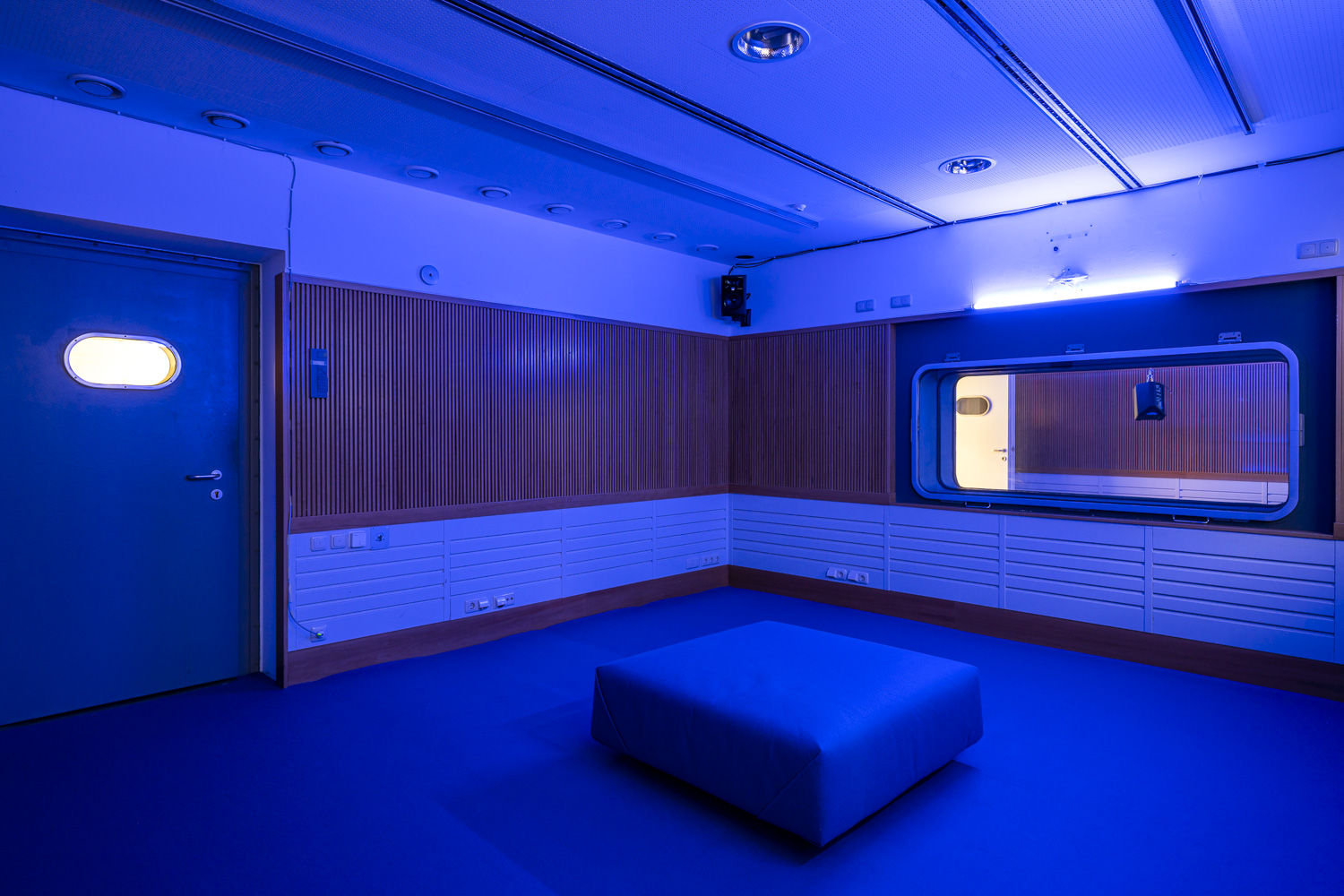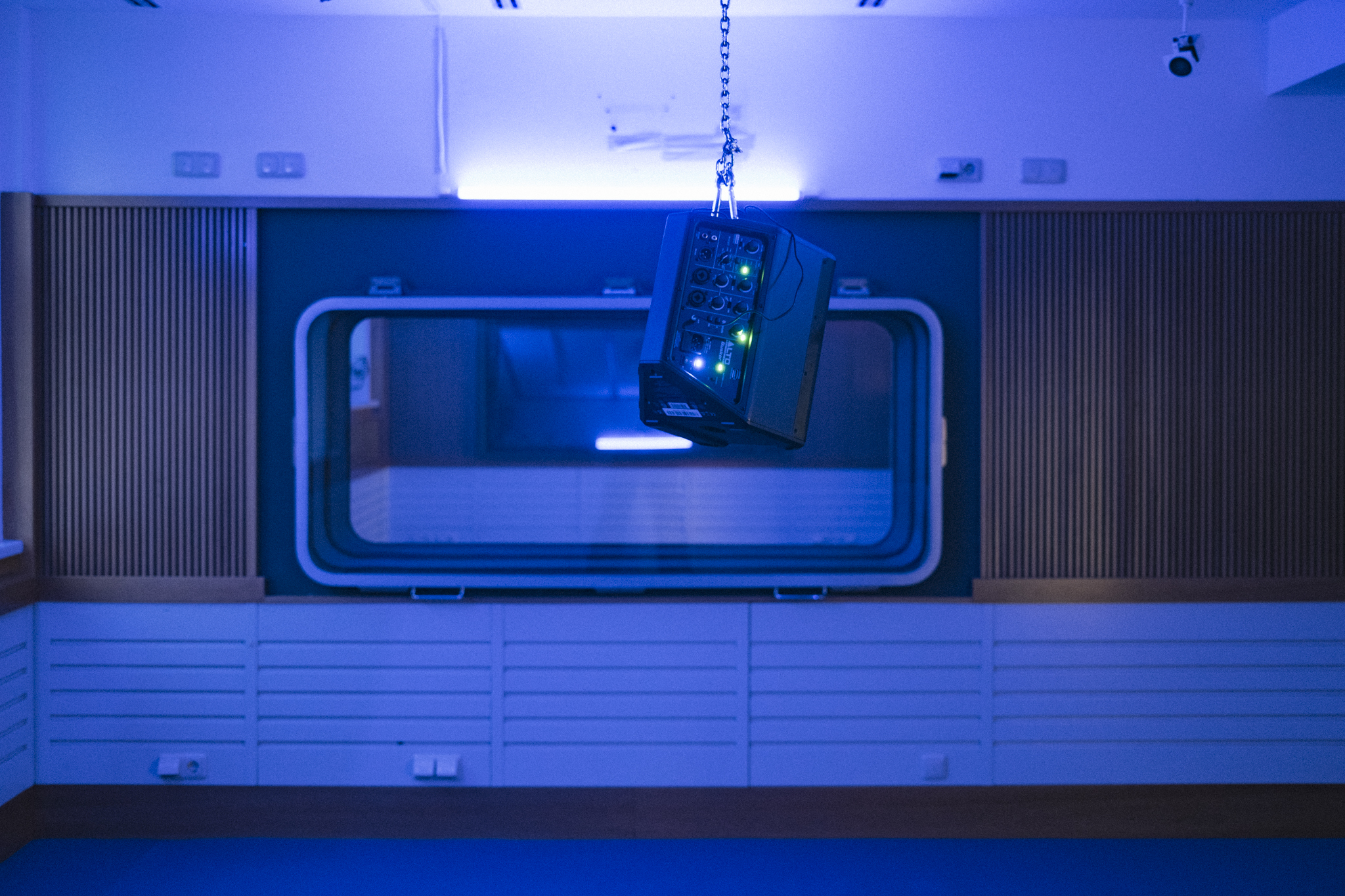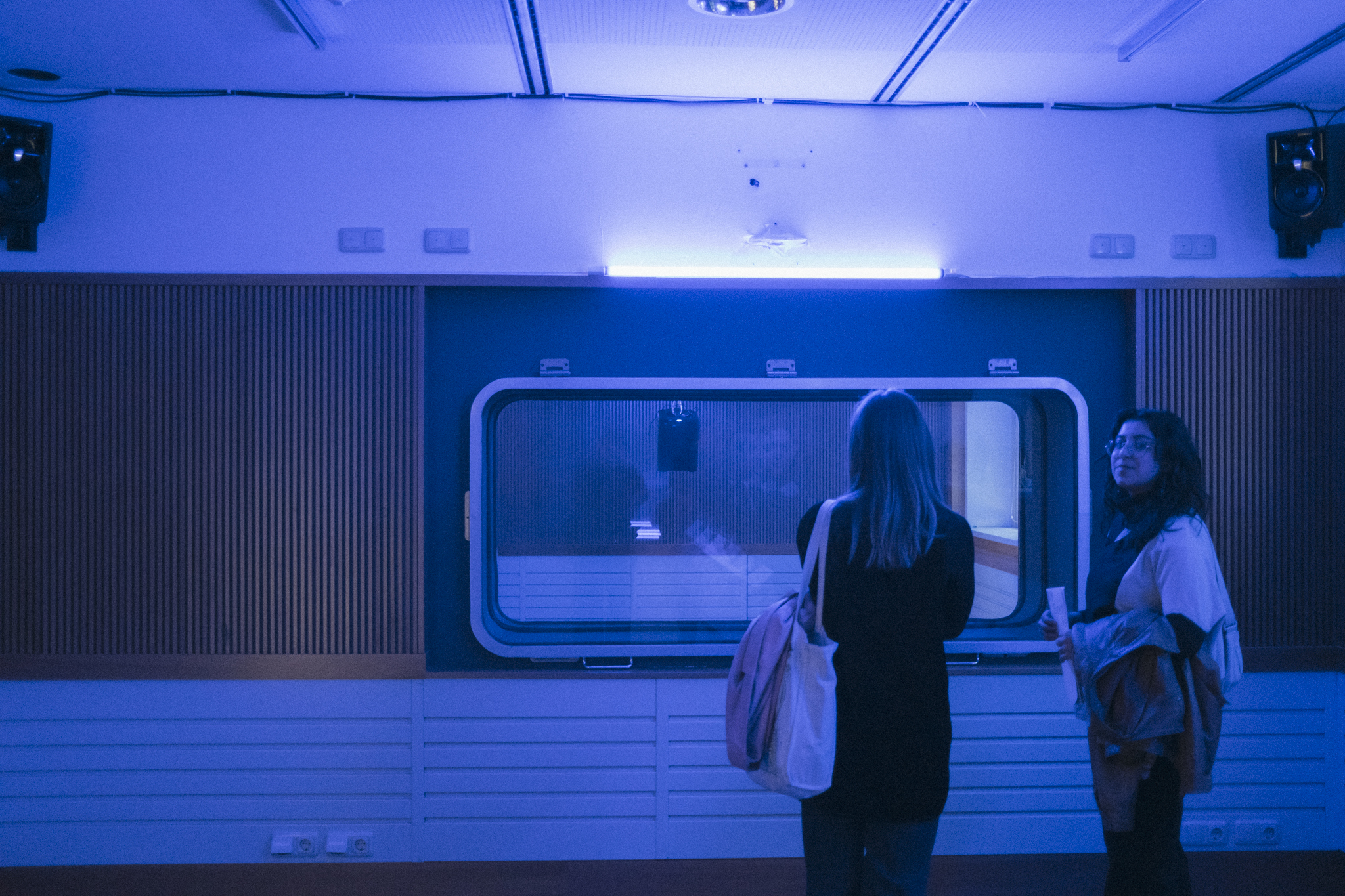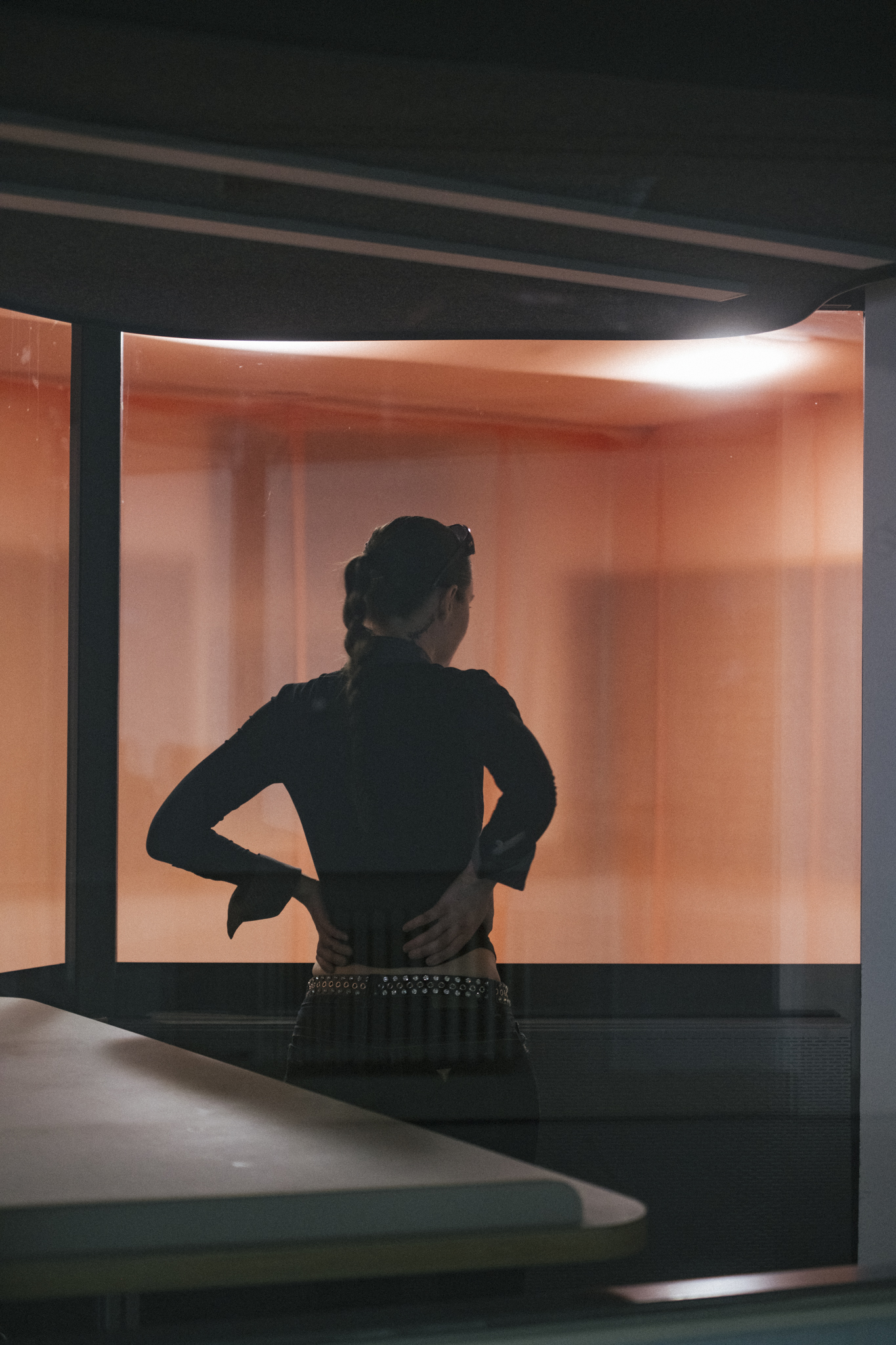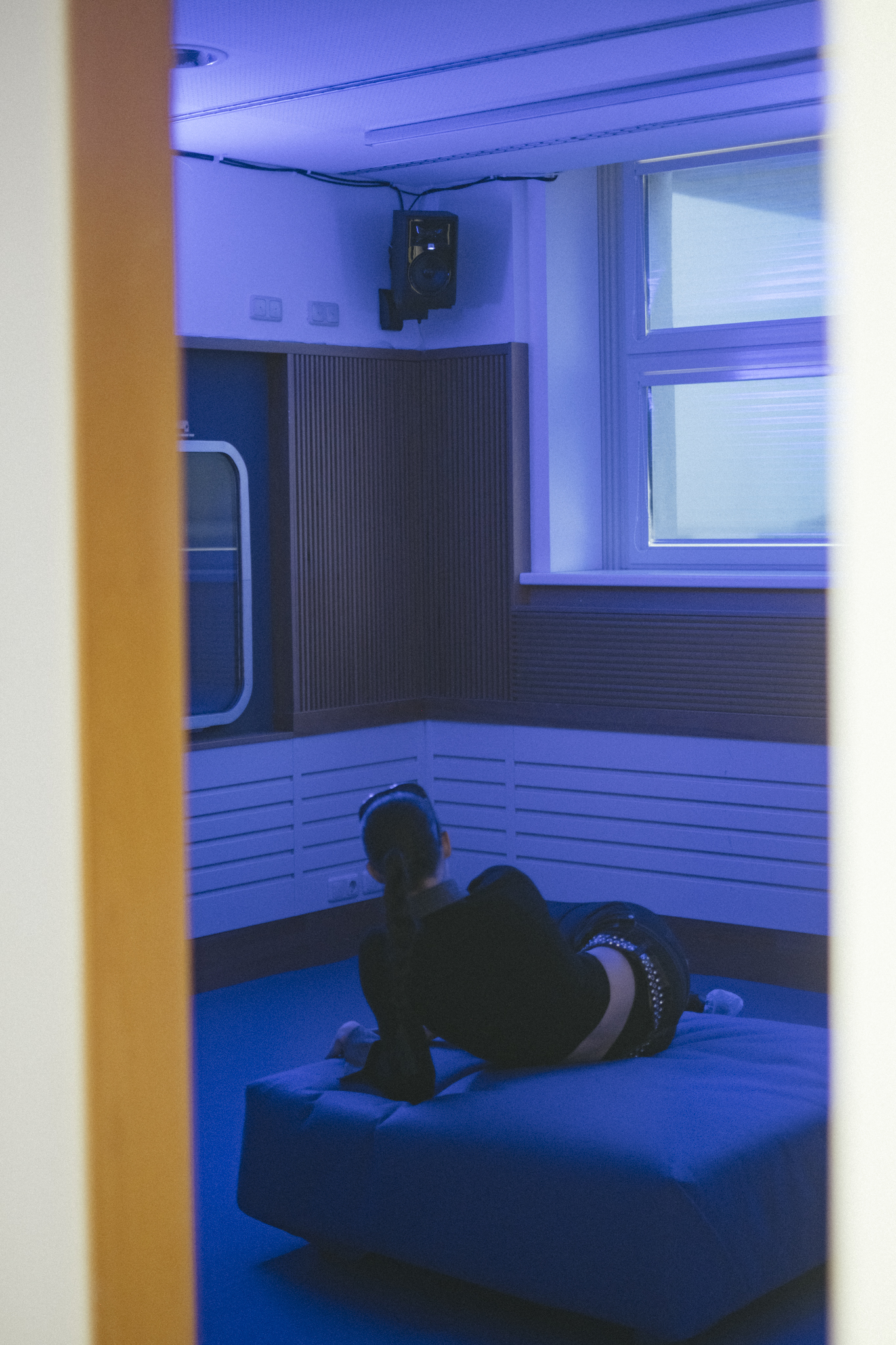My Body is a temple: TIDAL TONES
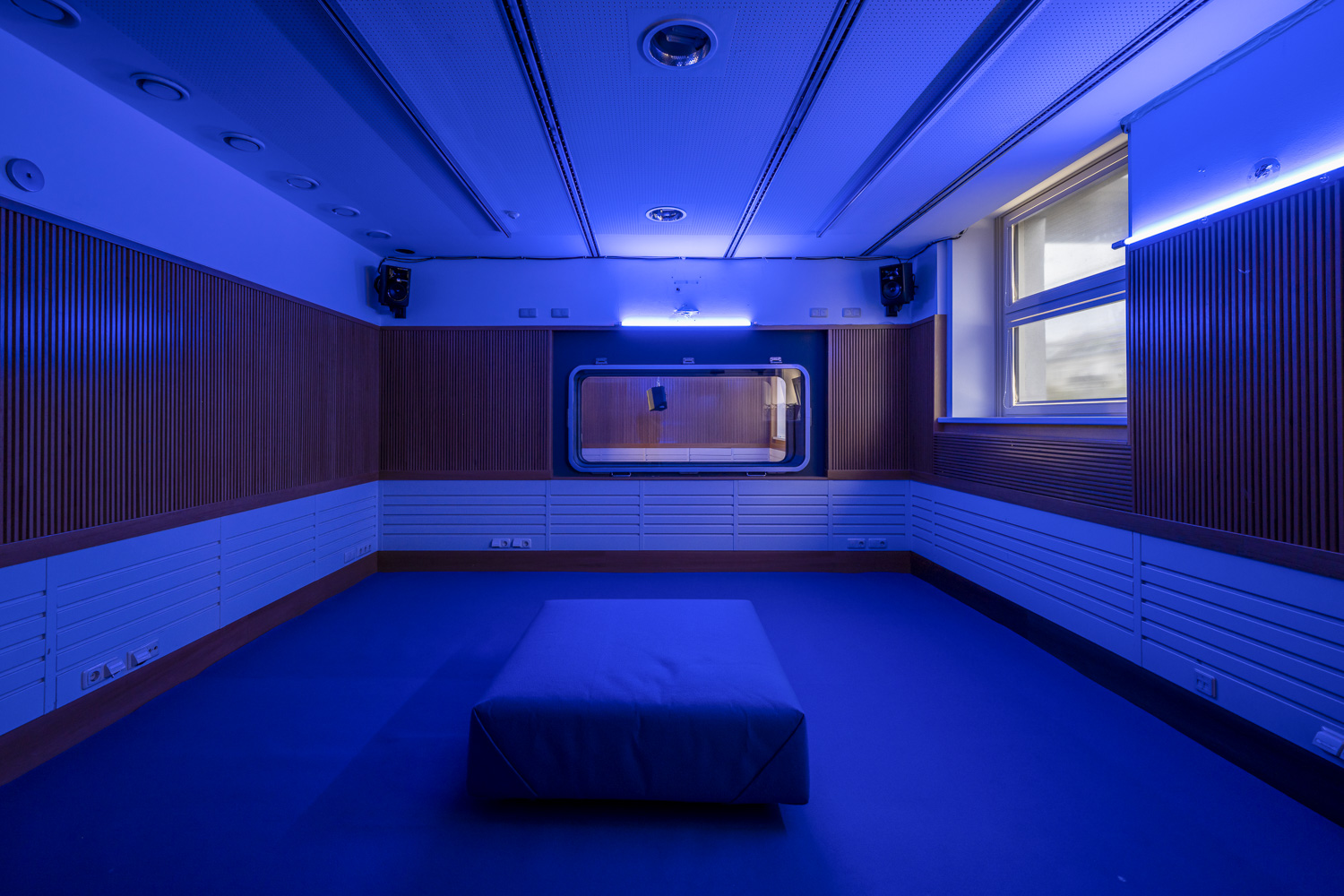

General Info
- Location / Client
-
Never at Home / Funkhouse Wien
- Date
-
22/05/2025 – 22/06/2025
- Typology
-
Exhibition
- Curated by
-
Carmen Lael Hines and Clara Grillmaier
- With works by
-
Arvida Byström, 2050+ and the Institute for Postnatural Studies
About
My Body Is A Temple is an exhibition of three site-specific installations conceived at the intersection of arts and critical technology studies. The listening installation Tidal Tones: Frequencies of War and Wellness resonates through the spaces of FUNKHAUS as a speculative and critically charged dual sound piece, exploring military research on cetacean sounds and its influence on western modernity, from warfare technologies to the culture of wellness.
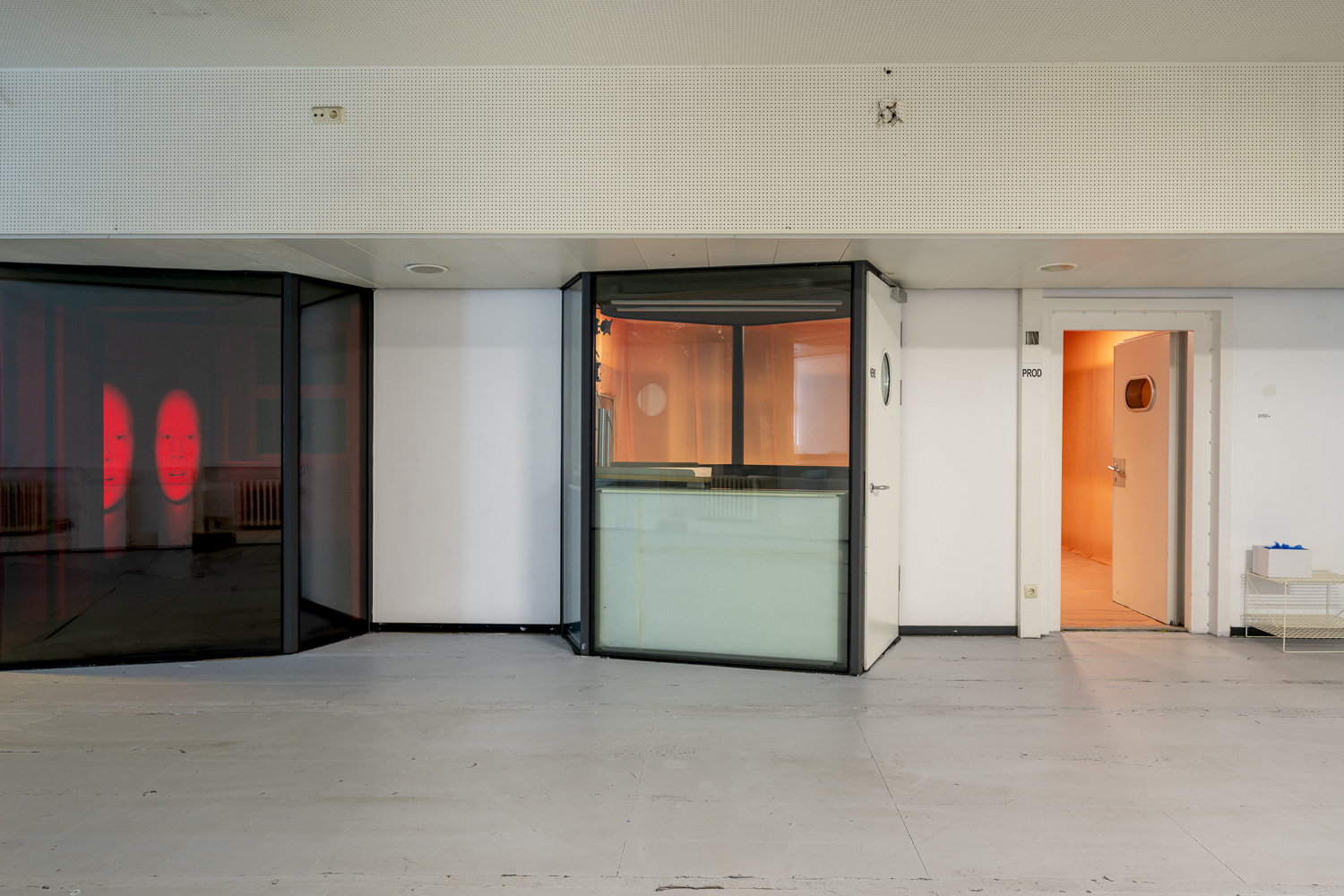
With inmersive installations by Arvida Byström, 2050+ and The Institute for Postnatural Studies
Todal Tones
The connection between war, wellness, and interspecies communication is a complex entanglement that involves various fields of research. During the Cold War, the U.S. Navy deployed hydrophone arrays as part of the SOSUS (Sound Surveillance System) to detect Soviet submarines. These underwater microphones inadvertently captured humpback whale vocalizations, which engineer Frank Watlington first identified in the 1950s. Classified for over a decade, the recordings were later shared with bioacoustician Roger Payne, who recognized their cultural significance. In 1970, he released the album Songs of the Humpback Whale in collaboration with National Geographic. The album introduced these soundscapes to the general public for the first time, transforming whales from industrial commodities (whale fat used for candles, street lighting, soaps, or lubricants) into voices that could now inhabit the domestic space. Payne recognized whale songs as evidence of nonhuman culture as their linguistic patterns challenged the human-animal binary rooted in language and reason, and from then on, whale songs have become synonymous with relaxation and well-being.
The contradiction between wellness and warfare is evident in how the same technologies used for healing can also be employed to harm. In this ambiguous space, frequencies—vibrations encoded and decoded by devices and bodies—act as a hybrid language that blurs the boundary between the biological and the technological. What appears in one context (sound therapy, neural stimulation, biofeedback) can, in another, become a silent weapon (electromagnetic warfare, cognitive manipulation). Thus, the animal body becomes a receptive and vulnerable interface, where health and control intertwine within the same vibrational spectrum.
Sound Bath
Sound healing, a practice that emerged in 1896, promotes using sonic frequencies to reduce stress, control anxiety levels, induce deep relaxation, promote brain synchronization, improve cardiac rhythm, enhance blood circulation, regulate muscle tension, and activate tissue regeneration.
Whale songs have been therapeutically appropriated and repackaged in wellness apps and services for sleep and stress relief, leveraging their low-frequency vibrations linked to reduced cortisol and improved heart rate variability. These applications align with the biophilia hypothesis, which suggests an innate human affinity for natural soundscapes.
Whale vocalizations share acoustic properties that have been associated with therapeutic and calming effects on the human body, offering a compelling connection between these marine sounds and sonic wellness practices. This connection underscores the broader therapeutic potential of marine soundscapes in fostering human health.
In this room, a sound bath is imbued with the healing frequencies connected to the throat (blue) chakra (741Hz), also known as the communication or the blue whale chakra. We invite you to allow these frequencies and vibrations to penetrate your tissues and stimulate your cellular activity. The alternating compression and relaxation of your cells during this sound bath function as a "cellular massage," balancing physiological processes while triggering the parasympathetic nervous system and communication abilities and desires.
Project Combo
The United States Navy’s interest in cetaceans extended beyond passive listening. Project COMBO sought to encode submarine communications within synthetic whale calls, testing these signals off California’s Catalina Island in the 1970s. While the disguised messages successfully evaded Soviet detection, they also attracted pilot whales, an unintended interspecies interaction highlighting the complexity of anthropocentric sound recordings. Military desires and technologies designed for war and political tension have unwantedly advanced marine science. These advancements, however, and in many cases, have reduced cetaceans to both data sources and a nonconsensual labor force, which continues to this day with research projects that are utilizing artificial intelligence to “translate” whale communication. In this room, you will hear an audio reading of the official Project COMBO document in which U.S. seamen describe whale sounds through a technological language. This gesture emphasizes how animal sounds are appropriated and utilized anthropocentrically.
Recording animal sounds can be extractivist, requiring manipulation to make them intelligible to humans. This manipulation risks defeating the purpose of interspecies communication, as it may prioritize human curiosity over animal autonomy. The distinction between scientific research and empathic understanding is blurred when the intention is aimed at technological advancement. True empathy might require abstaining from intervention altogether, which may be a radical proposition for science. Researchers should question their right to enter nonhuman habitats and consider the colonial dynamics at play in technological exploration. This involves recognizing the limitations of our current methods and striving for a balance between scientific inquiry and ecological empathy.

Credits
- Produced by
-
Nina Zips and Vera Grillmaier
- Photos
-
Ana Paula Franco, Clara Wildberger
